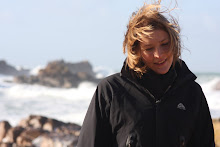I’ve been debating whether to write this blog entry as death
is one of those strange topics. But the
custom of notifying local people that someone has died by stapling notices up
around town has had me hooked since we first got here.
We all know we live in an aging population, well triple that
for Pera! Seriously when our neighbours
moved here with their two young girls I think it was the first young children
in Pera for years. Simply by attending
events, even I, manage to make the average age a little lower! So, as in all areas the only people having a
boom in this recession is the undertaker!
A death is announced (not by a notice in the paper as Agatha
Christie announced) by posters going up around town, with the details, date of
the funeral and often a photo of that person looking so young and healthy that
I don’t recognise them! Funerals happen
pretty quickly round here. Within a
couple of days you are sleeping in your spot in the cemetery.
Cremation is rare, in fact we are told that Rui (our local
grocer and undertaker (seriously)) only arranged his first cremation a couple
of years ago. Tradition is to be taken
to your family plot where your name is carved into the family headstone. Our 86 year old neighbour tells us that she’ll
never leave Pera, even in death, as she has her spot in the local cemetery.
It’s what happens after the announcement and the funeral
that has inspired this short blog.
Because despite your age, riches, likeability or any other redeeming feature
in life, your death announcement is stapled to the same door, where thousands
of staples remain from previous lives and following your funeral your notice is torn from the door and scrumpled up and thrown under the doorway.
Now if I was more poetic then I’d find you a nice bit of
symbolism in this. But since I’m not, I’ll
leave you to ponder it and decide if there is indeed symbolism to find!!!




Comments
Post a Comment